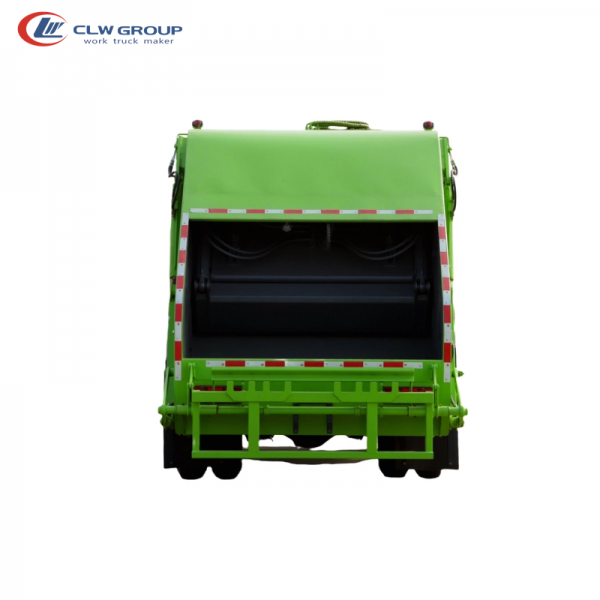Enhancing Efficiency and Safety with Truck Mounted Crane Remote Monitoring

Introduction:
In today's fast-paced world, industries are constantly seeking innovative solutions to improve operational efficiency and safety. One such solution that has gained significant momentum is remote monitoring technology, which has proven to be invaluable for various sectors. This article explores the applications of remote monitoring in truck mounted cranes and how it enhances efficiency and safety in construction, logistics, and other industries.
1. Understanding Truck Mounted Cranes:
Truck mounted cranes are versatile machines widely used across industries for lifting and moving heavy loads. They are mounted on trucks, allowing for easy transportation and quick setup on job sites. These cranes are essential in construction, infrastructure development, logistics, and various other sectors where the need for heavy lifting is frequent.
2. The Role of Remote Monitoring in Truck Mounted Cranes:
Remote monitoring technology has revolutionized the way industries operate by providing real-time insights and control over equipment and processes. When applied to truck mounted cranes, remote monitoring systems enable operators and managers to monitor and manage the crane's operations from a remote location. This technology utilizes sensors, telemetry, and advanced communication systems to transmit data and receive instructions.
3. Benefits of Remote Monitoring in Truck Mounted Cranes:
3.1 Improved Efficiency:
One of the primary benefits of remote monitoring in truck mounted cranes is enhanced operational efficiency. With How to choose the right work truck for your business -time monitoring, operators can track various parameters such as load capacity, crane position, and fuel consumption. This information enables them to optimize crane operations, reduce downtime, and make informed decisions regarding load capacities and routing.
3.2 Enhanced Safety:
Safety is paramount in any industry, especially when dealing with heavy machinery like truck mounted cranes. Remote monitoring technology plays a critical role in ensuring the safety of both operators and surrounding personnel. By monitoring crucial parameters, such as crane stability, load limits, and operating conditions, operators can detect any potential risks or malfunctions before they escalate into accidents.
3.3 Predictive Maintenance:
Truck mounted cranes, like any other machinery, require regular maintenance to ensure optimal performance and longevity. Remote monitoring systems facilitate predictive maintenance by continuously monitoring various parameters, such as engine health, hydraulic pressures, and temperature levels. By detecting early signs of wear or potential failures, maintenance can be planned in advance, reducing unplanned downtime and expensive repairs.
4. Key Components of Remote Monitoring Systems for Truck Mounted Cranes:
4.1 Sensors and Telemetry:
Remote monitoring systems employ a range of sensors to collect data from the truck mounted crane. These sensors can include load sensors, angle sensors, pressure sensors, and temperature sensors, among others. The collected data is then transmitted via telemetry to a central control system for analysis and decision-making.
4.2 Communication Systems:
To facilitate real-time monitoring and control, remote monitoring systems rely on robust communication systems. These systems can use cellular networks, satellite communication, or dedicated wireless networks to transmit data between the crane and the remote monitoring center. The choice of communication system depends on factors such as location, coverage, and data requirements.
4.3 Data Analysis and Visualization:
The collected data from the truck mounted crane is processed and analyzed in the remote monitoring center. Advanced analytics algorithms identify patterns, anomalies, and potential risks, providing actionable insights to operators and managers. These insights are then visualized through user-friendly interfaces, allowing for quick and informed decision-making.
5. Case Studies: Successful Implementation of Remote Monitoring in Truck Mounted Cranes:
5.1 Construction Industry:

In the construction industry, remote monitoring has significantly improved operational efficiency and safety. By remotely monitoring parameters such as load limits, crane stability, and operator performance, construction companies can prevent accidents and optimize crane operations. Real-time data also allows for better coordination between crane operators and other construction activities, minimizing delays and maximizing productivity.
5.2 Logistics and Transportation:
Truck mounted cranes play a vital role in the logistics and transportation sector. Remote monitoring technology enables logistics companies to track the location, condition, and performance of their truck mounted cranes in real-time. This information helps optimize route planning, reduce fuel consumption, and ensure timely delivery of goods. Additionally, remote monitoring enhances fleet management by providing insights into driver behavior, load capacity, and maintenance requirements.
6. Challenges and Future Prospects:
While remote monitoring technology has made significant advancements, there are still challenges to overcome. These challenges include ensuring data security, integrating remote monitoring systems with existing infrastructure, and addressing connectivity issues in remote areas. However, with advancements in communication technology and the increasing adoption of the Internet of Things (IoT), the future prospects for remote monitoring in truck mounted cranes are promising.
Conclusion:
Remote monitoring in truck mounted cranes has emerged as a game-changer in the construction, logistics, and other industries where heavy lifting is a common requirement. By providing real-time insights and control, remote monitoring technology enhances operational efficiency, improves safety, and enables predictive maintenance. With ongoing advancements in technology, the integration of remote monitoring systems with truck mounted cranes is set to become more seamless, ensuring an even more productive and secure working environment.
